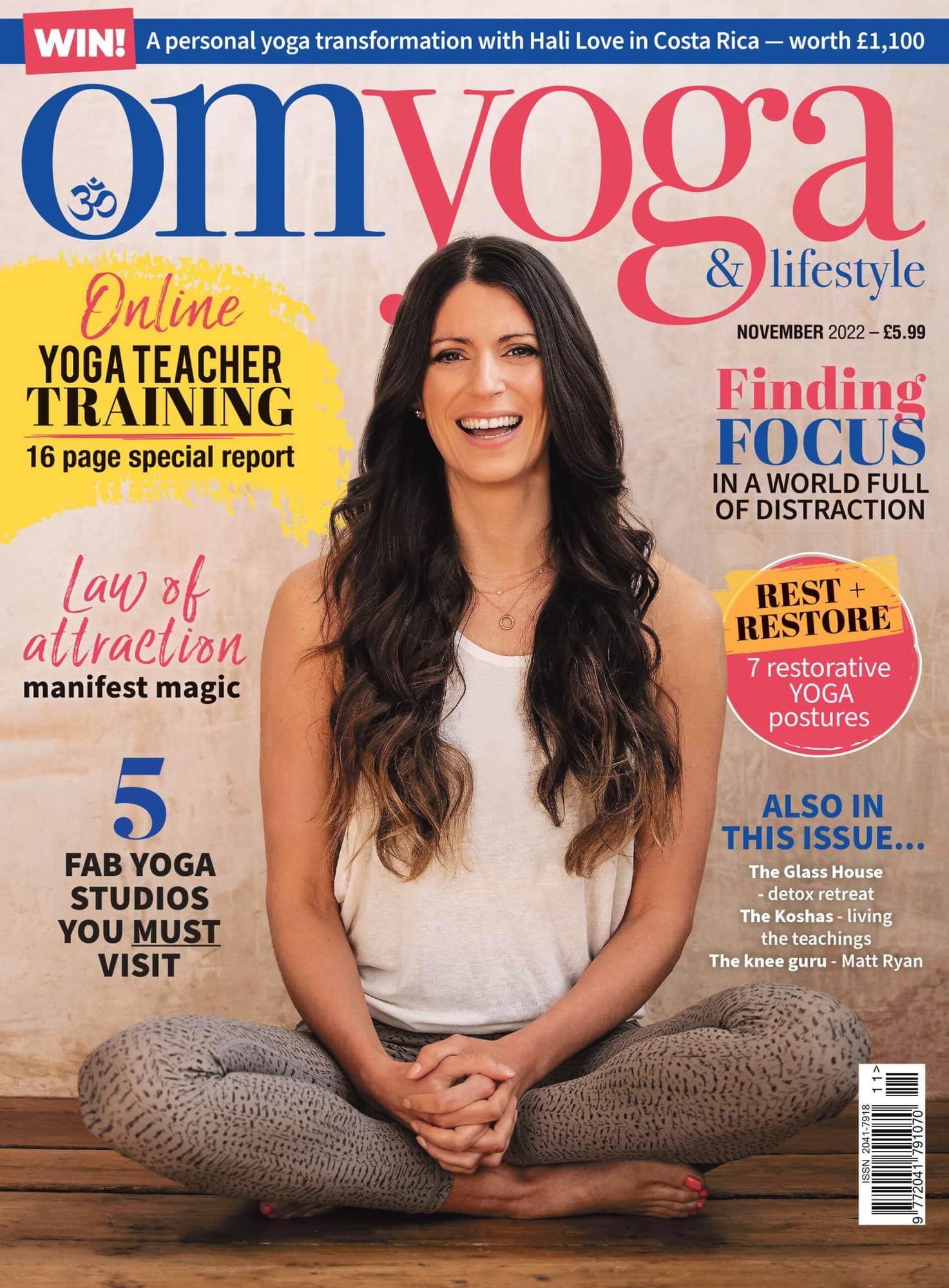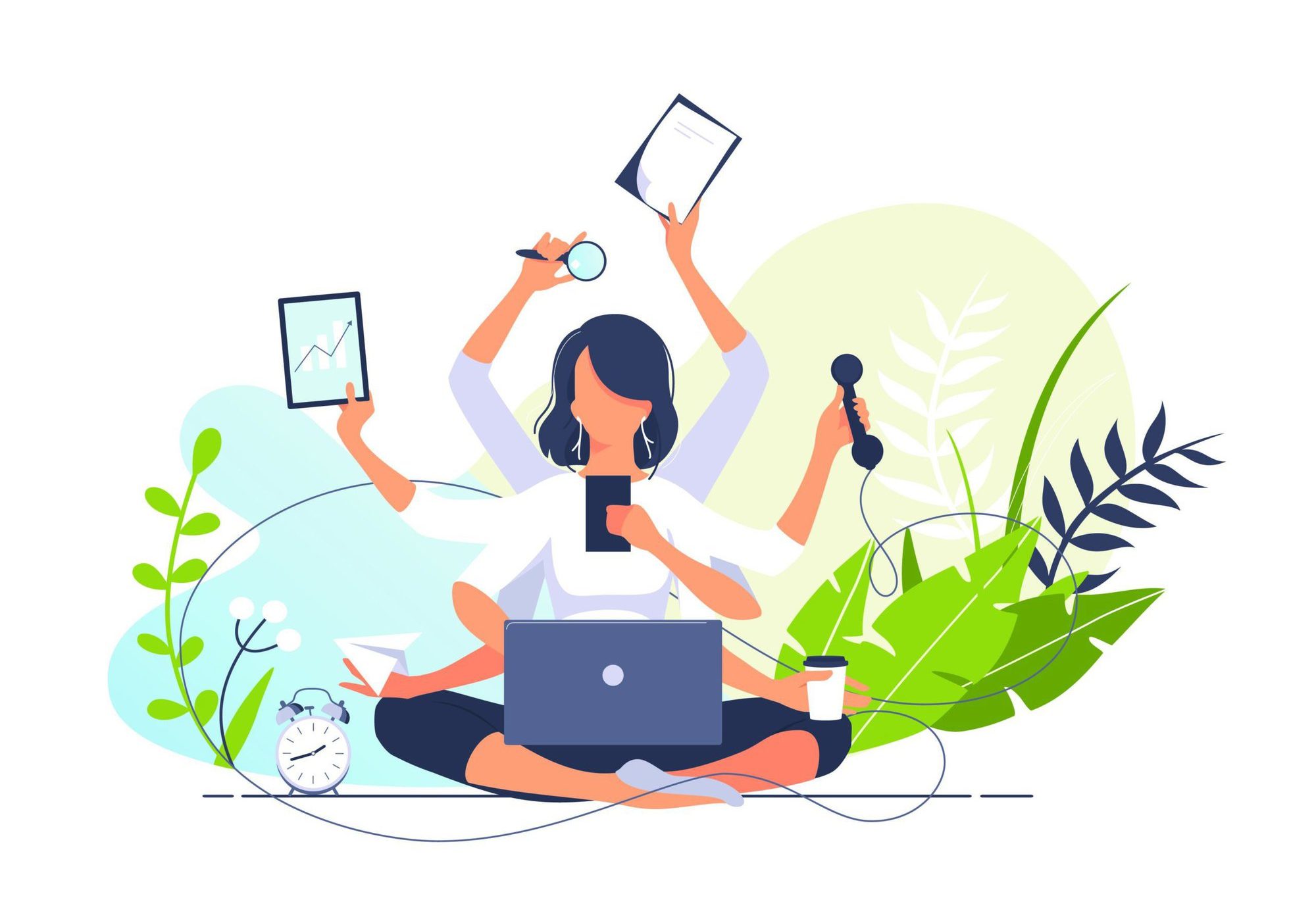
Finding focus in a world full of distraction
The essential principles of yoga that will help you focus and achieve your goals in a world full of distraction. By Elle O’Connor
We all do it: walk into a room to get something and have a complete brain blank as to what it was. Or start a conversation only to tail off half way through having lost our train of thought. We are not losing our minds, we are losing our ability to focus. In a world that is increasingly full of distractions, our attention is being constantly disrupted which is having a huge impact on our ability to concentrate, as well as on our mental wellbeing.
The human brain can only think about one thing at a time. Multi tasking between cooking, scrolling through emails and having a conversation with someone may seem like we are achieving more in a shorter time. However, because your brain is actually switching between these things and without direct focus on each task, we are actually doing it all less competently.
As we likely know, part of the issue is the amount of time we spend on our screens. We flit between apps — news, content, social media, work — so the brain is constantly having to switch and change its thought processes. Tech companies are perfecting ways to infiltrate our attention and social media giants are creating a world that actively persuades more time communicating behind screens and less time physically with each other.
Don’t fear, yoga is here to help! There are ways that, with practice, we can regain control and introduce habits that will claw back this vital ability to concentrate and properly connect with others.
Yoga: mastery over the mind
The purpose of traditional yoga practice is to achieve mastery over the mind; the ability to be still with your thoughts and improve awareness in the moment. While the physical practice of yoga is, in part, to exercise to keep the body fit, it is also to release tension held in the body so we can be still for periods of time in order to meditate.
When yoga was first founded thousands of years ago, of course technology was not in existence. Yet still there was a need for yoga as a way to calm our thoughts and prevent mental distress. The mind is prone to chatter which is how we process information around us and make decisions. But this chatter can get out of control; thoughts can start to loop and when there is too much going on in our brains, focusing on a single task becomes impossible.
Through meditation, we can learn to calm the mind, slow racing thoughts and take a sense of calm focus into our daily lives. Yoga and meditation practice does not have to be complicated. Incorporating some simple daily habits can make a huge difference to your mental state.
Stress and anxiety
The brain is wired to protect us when we perceive danger with the sympathetic nervous system triggering a 'fight or flight' reaction. Hormones such as cortisol and adrenaline are released to the body to heighten our thought processing to deal with the threat.
This is useful if faced with a short term life or death situation that we need to run from or fight, but long-term this will impact our ability to focus. Yoga is known to be an excellent way to de-stress the body and mind, switching on the parasympathetic nervous response for rest and relaxation. In particular yin, or restorative yoga, can help those who are prone to anxiety.
Pranayama and breathing
The traditional Sanskrit meaning of pranayama is to guide and maintain the body's vital life force, or energy flow. ‘Prana’ means life energy and ‘yama’ means control. A more modern interpretation is that it is the regulation of the breath, which is associated with the prana, through certain techniques and exercises. Full breathing brings fresh oxygen to the brain, as well as helping the parasympathetic nervous system regulate stress and anxiety. Both of these factors allow us to concentrate and focus.
There are many simple pranayama techniques such as yogic breathing that encourage slow, mindful breathing using the full capacity of the lungs. Consciously breathing into the abdomen, middle chest and upper chest, holding the breath for some time and then releasing, pausing at empty, can all help to calm us and bring greater clarity. The more advanced techniques such as Kapalabhati, skull-cleansing breathing, can have a powerful impact, and would be best practiced with a teacher.
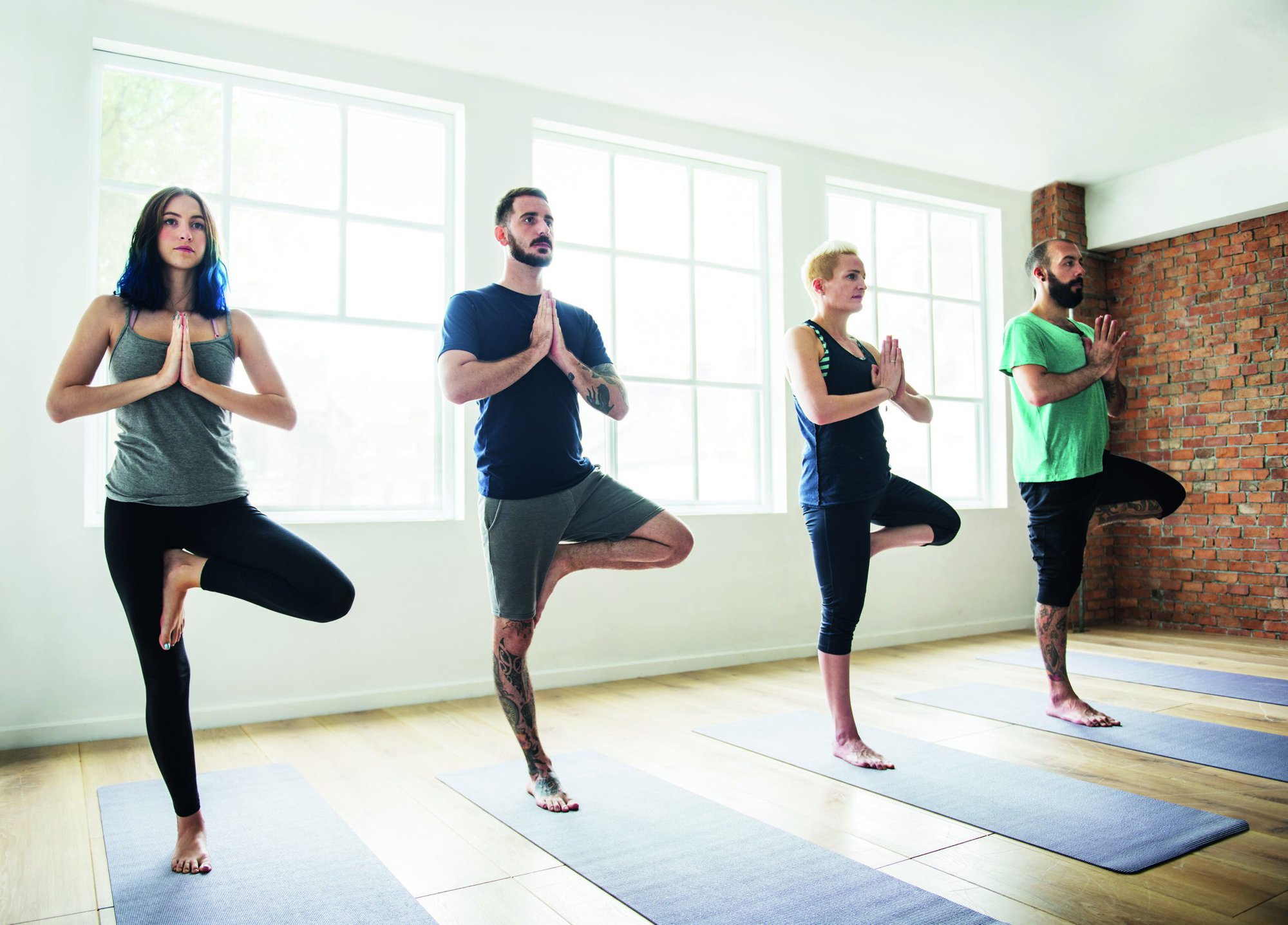
Meditation
What has been practiced for centuries by many cultures, and is becoming more understood globally is the impact that meditation can have on our mental state. Meditation is the pathway to the ultimate goal of yoga practice — the ability to reach samadhi, a blissful form of total meditative absorption and connection with the universal spirit. By focusing on one thing — the flow of breath in and out of the body, a vision like a blue sky or waterfall, a sound or a chant like 'Ommm' or a flickering candle — we force the mind to calm and the nervous system to relax.
Meditation does not need to be complicated or take up too much time. You can start with a YouTube video, podcast, or by subscribing to a platform like Insight Timer, Calm or Headspace for guidance. Or, if available, join a specific meditation or yoga class with a teacher you connect with.
With practice, over time, meditative techniques have the ability to effectively ‘re-wire the brain’, changing our thoughts and therefore feelings. There are also many techniques of visualisation or manifestation that we can add in that could alter the course of the day and ultimately our life. With a quieter, calmer and more positive mindset we find the ability to truly focus on a task at hand and are less likely to get distracted by our own thoughts.

Finding flow
I enjoy a flow yoga practice, sometimes called Vinyasa, moving in time with breath and music. I like concentrating on the movement and I find it distracts my wandering mind for a while, eventually being able to slow down and hold asanas for longer periods of time.
When moving through the postures and relaxing into the sequence, I find myself in a 'flow state', a term coined by Mihály Csíkszentmihályi, which means the feeling of peace and calm when we are able to solely focus on one single task. Time can whizz by and we achieve more in a short time with single focus than in a longer time with distraction. When you are in a flow state, attention comes easily.
For me, it's flow yoga, but there will be different activities for different people depending on your passions. Dancing, cooking, painting, writing — find an activity that is meaningful to you and that you become immersed in with a clear goal. Challenge yourself to something that's a bit harder than something you have done before, but not out of reach.
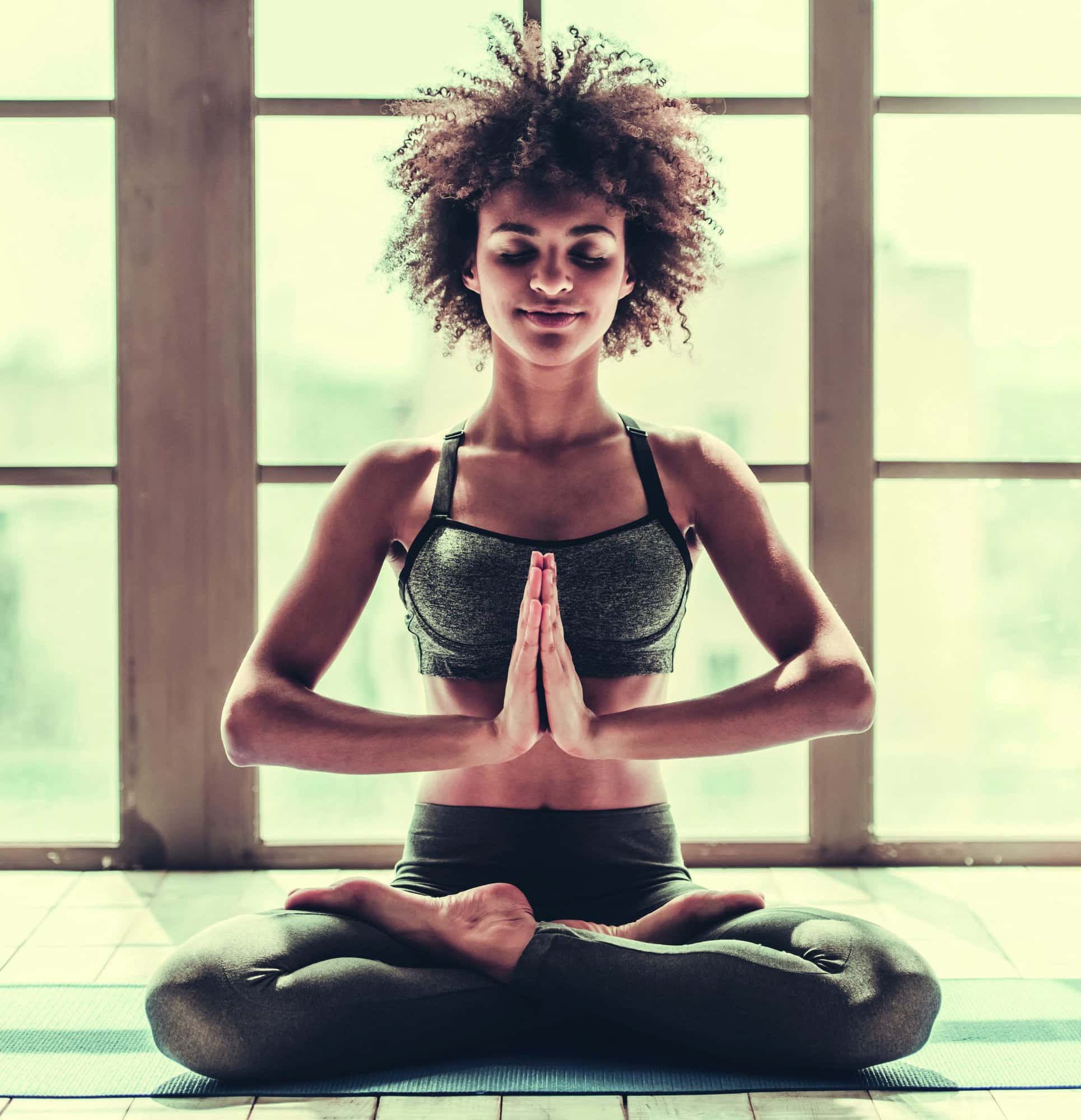
Hold the pose
Certain asanas take more concentration than others, particularly those that require balance. By focusing on getting into and holding a challenging pose (and not falling over!) we become practiced at concentrating deeply on one thing.
Tree pose, for example, requires the brain to think about multiple muscles of the body at once to stay upright, whilst continuing to breathe. The warriors, in particular warrior 3 (Virabhadrasana III) again require lots of mental energy to hold, reducing the chance of distracting thoughts creeping in.
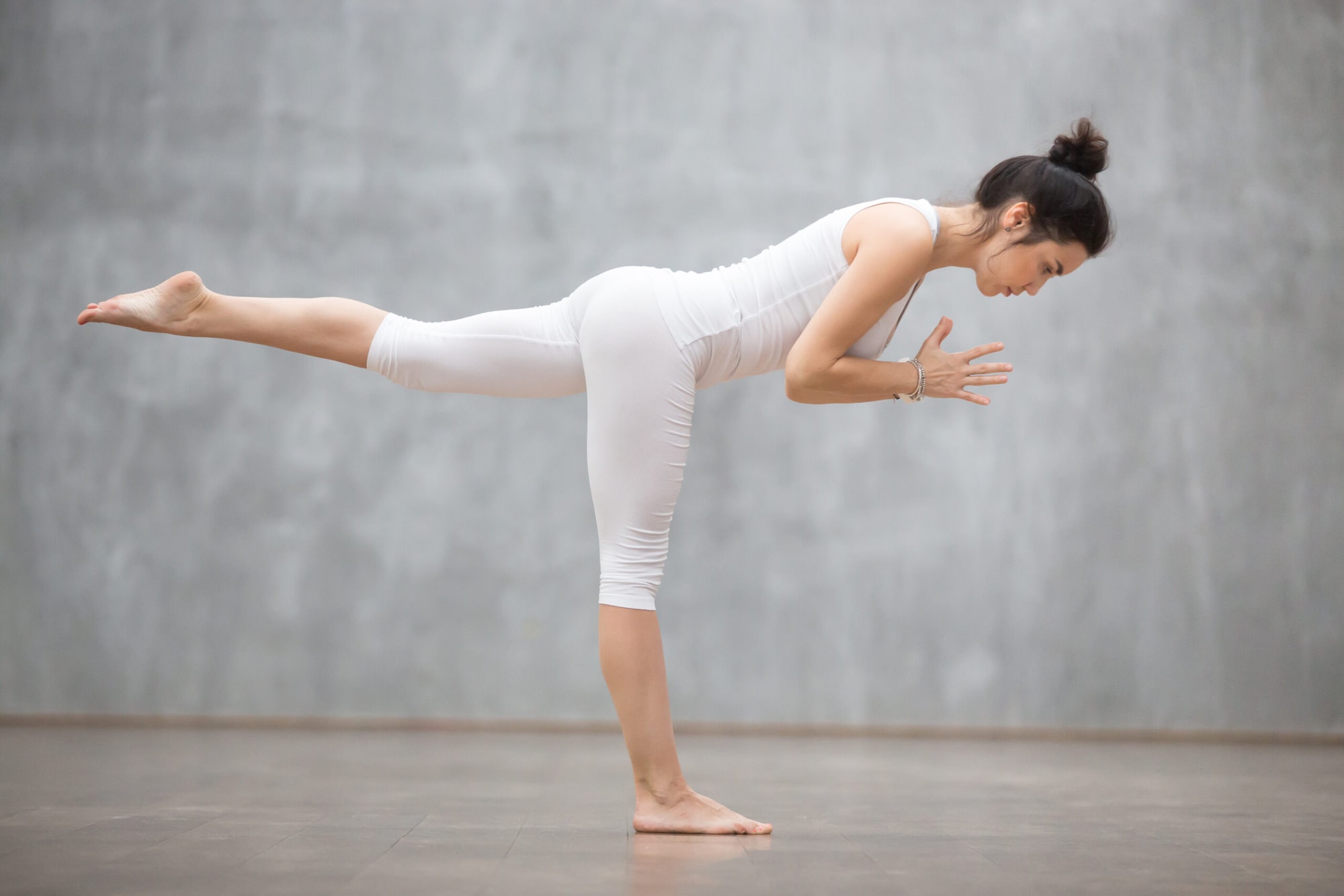
Exercise, food and sleep
Part of practicing yoga holistically includes what we put into our bodies, how we rest and what other exercise we do. These areas contribute to how clearly we can think, and how well we can concentrate.
When it comes to food, nutritionally balanced eating throughout the day allows the body to get all the protein, carbs, fibre, fats, vitamins and minerals it needs to function at its best. At every meal add lots of vegetables, some fruits, nuts, wholegrain complex carbohydrates, healthy fats and quality protein to your plate.
Movement hugely promotes attention and focus. During and post-exercise there are physical changes that improve our immediate ability to think and remember. Regular movement throughout the day is key to reducing inflammation in the body and brain, releasing endorphins and happy hormone serotonin whilst reducing stress-inducing cortisol.
Good quality sleep has consistently been proven to be important for a healthy immune system, and vital in brain functioning. The ability to pay attention dramatically drops after being awake for 18 hours. We need sleep, in particular deep, slow-wave sleep, to process the events of the day.
Being present in the moment
A principle of yoga practice that you will likely be aware of is being present in a particular moment. Many spiritual teachers around the world encourage us to ground ourselves and to focus on what is happening at this point of time. With our busy lives we have a tendency to get caught up in the past and worrying about the future which can leave you worn out and feeling out of touch with yourself and those around you.
During your yoga practice try focusing on each sense: what can you see, what can you hear, what can you smell and how you feel in a particular posture. And again, bring it back to the breath: focus on the feeling of your lungs filling and emptying with air. Our breath is our constant connection to the here and now. With practice, bringing yourself back to the present moment will become a habit.
Regular yoga practices will certainly help you regain focus and embrace creative thinking. Hopefully, with this, you will find it easier to follow your path towards the goals you may have for your life. Let's go back to our roots, tap into our inner wisdom and regain some of the quietness and calm that is crucial for mental and emotional balance.
Elle O’Connor is a practicing yoga instructor, nutritional advisor, writer and avid reader. Find her at: homyumyoga.wordpress.com


